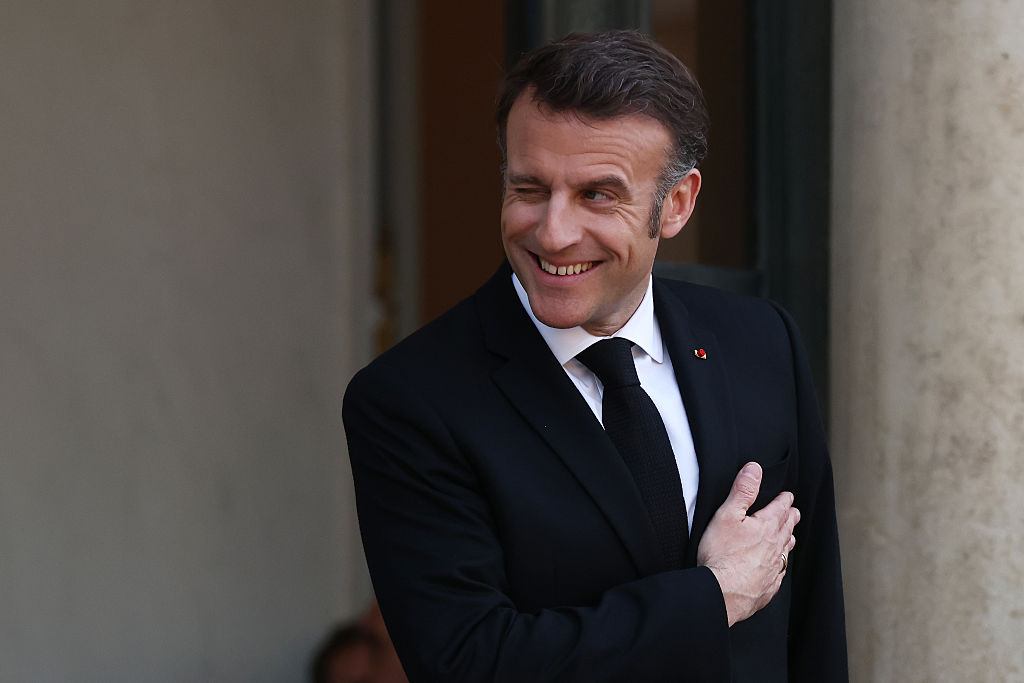Polish president-elect Karol Nawrocki’s victory shows that conservative populism remains strong in that vital country. The results also reveal something that could be equally important to Poland’s future: conservative populism is itself changing.
The Law and Justice party (known as PiS after its Polish initials) has long dominated the Polish Right. Born in 2001 as the first dominant post-Communist political party, Solidarity Electoral Action, dissolved, PiS has always embraced social conservatism and an economic policy derived from Catholic social justice teaching.
This blend of traditional morality and a Polish version of Germany’s social market economy propelled it to become the leading force of Polish conservatism by 2005. It has since maintained that position, seeing off potential challenges from personalist populist or conservative parties in the early to mid-2010s.
PiS’s dominance on the Right can be seen by its steady performance in presidential elections. It always won between 33 and 44 per cent of the vote in the first round between 2005 and 2020, winning the runoff election three of four times.
As importantly, no party to its Right has dented its position. The PiS-backed candidate won 59 and 88 per cent of the combined vote for conservative and populist candidates in the first round in each of those four elections. In fact, no party in its political space received at least five per cent of the vote in consecutive elections during that span.
These dynamics have now changed, likely irrevocably.
Nawrocki won only 29.5 percent of the first-round vote, the lowest share ever for a PiS-backed presidential candidate. Furthermore, that total comprised a record low 57 per cent of the combined conservative-populist share of the first-round vote.
PiS also now faces a serious, sustained competitor to its Right for the first time. The Confederation party’s candidate won 7 per cent in 2020 and 15 per cent in 2025, the first time a conservative populist entity other than PiS has broken five per cent in consecutive elections.
Law and Justice clearly now has a leading, but not a dominant, position among Polish conservatives.
That fact was laid bare during the campaign. Confederation’s candidate, Slawomir Mentzen, withheld his endorsement from Nawrocki. Instead, he invited him and his liberal opponent, Warsaw mayor Rafal Trzaskowski, to interviews he would conduct on his You Tube channel.
Mentzen gave each man a list of eight policy items he supported and asked them to tell him – and, by extension, his voters – whether he agreed with them.
Nawrocki signed on the dotted line, agreeing to all eight propositions. This included a promise not to permit Ukraine to join NATO or to send Polish soldiers to man any European peacekeeping force to police any peace agreement with Russia. Trzaskowksi demurred, agreeing to only some of the proposals.
Mentzen told his fans a few days before the vote that while he would not formally endorse either, Nawrocki’s commitments were acceptable while Trzaskowki’s were not.
That tacit backing was likely why Nawrocki won. An exit poll shows that 87 per cent of Mentzen’s first round voters cast ballots for Nawrocki. Had he won “only” 70 per cent of those Poles, Trzaskowski would likely have prevailed.
Demographic changes also are undermining PiS’s traditional position. It has long relied on winning large margins in Poland’s small villages and towns. But as the nation rapidly grows richer, more and more Poles are living in larger cities. Indeed, cities cast about 188,000 more votes in 2025 than they did in 2020, while villages cast only 9,000 additional votes.
Even that understates the change underway. The smallest villages, those with populations under 10,000 people, cast over 1.5 million fewer votes in 2025 than just five years before. PiS has traditionally won about two-thirds of the votes in these small burgs; their decline is thus a direct threat to PiS’ continued viability unless the party can gain vote share in larger towns.
That’s what happened this year in places with between 10,000 and 100,000 residents, but that needs to be sustained for Polish conservatism to win in the long term.
PiS also now depends on a new source of votes, Polish expatriates, to prevail. The number of Poles voting from abroad has surged in the last twenty years, from 48,000 in 2005 to 604,000 this year. PiS does very poorly among these voters, but Nawrocki’s share of them grew by nearly 11 per cent compared with Andrzej Duda’s total in 2020.
That was again likely due to voters who preferred Mentzen or another conservative populist, Gregor Braun, in the first round. Nawrocki won only 16 per cent of the first-round expat vote compared with 27.8 percent for Mentzen and Braun combined.
The Mentzen-Braun voter is also significantly younger than the typical PiS voter. The exit poll showed that Nawrocki won only 11 per cent of the first-round votes of 18–29-year-olds, and 19 per cent of 30–49-year-olds, compared to over 40 and 35 per cent, respectively, for the populist duo. Yet he won both younger demographics with about 53 per cent in the runoff.
These dynamics will likely come into play in the next parliamentary election. Polls currently show PiS stuck below a third of the vote with Confederation averaging around 14 per cent. That would mean PiS would need to form a coalition government with a strong party to its Right, something it has not done since 2005.
PiS has long had another potential partner, the rural-based Polish People’s Party (PSL) but has never managed to make it a long-term ally. That failure is why Donald Tusk, not Mateusz Morawiecki, is Prime Minister. The PSL’s 28 members, elected in an alliance with the centrist Poland 2050 party, is what gives Tusk’s coalition its parliamentary majority.
PSL ought to reconsider this alliance given the coalition’s leftward drift. Its MPs stopped Tusk’s drive to liberalise abortion laws, something PSL’s socially conservative voters abhor. Many of those voters likely backed Mentzen or Braun, given that these candidates are strongly anti-abortion and did best in rural areas where PiS and PSL are strongest. Continuing to back Tusk might be a death sentence for the small party which nonetheless is the only one to win parliamentary seats in every post-Communist parliament.
The next year might be a time of immense change in Polish politics if PiS adapts to its new position. A party that understands it can no longer dominate the conservative-populist political space might work to form a working arrangement with Confederation and PSL. Those parties already form a majority in parliament’s most powerful chamber, the Sejm, and could replace Tusk’s government.
This would require considerable tact and understanding, however, from a party that often lacks it. Seventy-five-year-old Jaroslaw Kaczynski has led PiS since 2003 and is known for his strong personal leadership. Genuinely sharing power with other entities and leaders would be a very new trick for this old dog to master.
It would be especially hard for Kaczynski and PiS to accommodate Confederation’s much more free-market economic policies. Morawiecki’s economic record while in power is one reason Confederation refused to join a potential coalition with PiS after the last parliamentary election. If current polls hold, Confederation will have the power to force PiS to move in its direction or suffer the consequences of another Tusk administration.
Poland remains a right-leaning country, despite all of the efforts of Tusk and his allies in Brussels to shift it towards the elite liberal consensus. The precise direction of that lean, and who is in position to shape it, is nonetheless more up in the air than at any time in the last quarter century.





Blow for ‘progressive’ Tusk: Anti-abortion trio receive majority in presidential vote